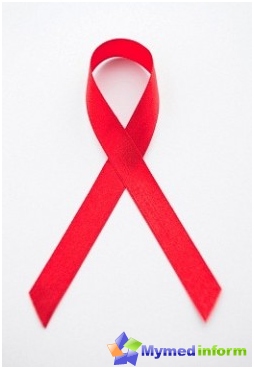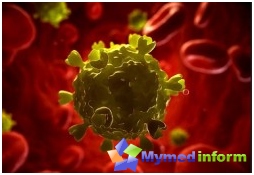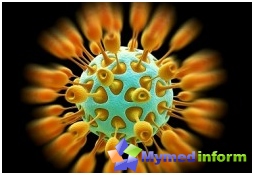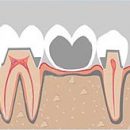Despite the constant studies of scientists and painstaking work in the fight against the deadly virus currently there are no justified funds for its treatment. Our site calls to understand that HIV and AIDS are not at all synonyms of one disease. What is HIV is an infectious disease that can lead to the stage of development of AIDS.
Definition

Acquired immunodeficiency syndrome is a violation of the normal performance of the human immune system, due to the action of HIV infection and representing its final, fourth stage. The symptoms of this disease and its clinical picture may have a variety of manifestations. The main feature according to which the presence of a virus in the human body is a blood test «CD4+», Setting the number of T-lymphocytes. This indicator determines the level of oppression of the body's protective system by virus immunodeficiency. It is believed that the number of CD4 cells in the blood of a healthy person can fluctuate in the range from 600 to 1800 CB / ml of blood. It should also be borne in mind that at different stages of vital activity, the content of these cells in the blood may differ, depending on the general state of health at the time of analysis.
The amount of CD4 is significantly reduced for 2-3 weeks after the penetration of the virus to the patient's body. Depending on the level of the body's resistance, this coefficient increases again, but it never reaches its source value. An indicator that is considered to be the CD4 control point is usually stabilized in the timing of 3 to 6 months. Thus, the degree of lesion of the body determines the average level of T-lymphocytes, the systematic drop of which is about 50 cells / mm3 per year. In most people, the immune system is able to effectively monitor HIV, as a result of which he may not show himself for many years.
Stage HIV

The deadly immunodeficiency virus is able to exist in the body of an infected patient for 10-12 years, without showing signs of immunity damage. The source of direct infection is a sick person. Infection is carried out through contact with a patient's liquid medium. It may be blood, breast milk, vaginal secret and cum. Therefore, the infection can be transmitted during blood transfusion, the use of one syringe with an infected person, by means of sexual contact (oral, vaginal or anal), as well as a sick mother to the child in the process of feeding or having to wear. Modern epidemiologists unanimously reject the possibility of transferring the virus by air-droplet or by means of fecal-oral contact because the selection of infection with urine, feces and sputum is completely insignificant. Also slightly the number of susceptible cells in the respiratory tract and the gastrointestinal tract. Penetrating the body of a healthy person, HIV infection, first of all, strikes dendritic cells, macrophages and T-lymphocytes. The elementary units of the structure of the body affected by the virus are inevitably die for a certain time. The destruction of CD8 + cells is due to the activities of T-lymphocytes because the population of CD4 + T-lymphocytes is constantly reduced, inevitably reducing cellular immunity. When their content comes to a critical level, a person becomes a vulnerable action of various conditionally pathogenic infections. Therefore, it is necessary to clearly divide the concepts of Vicha and AIDS, which is the last stage of deadly danger.
AIDS stage

What is AIDS is the last stage of the progression of HIV infection, in which the analysis testimony «CD4+» It turns out below the level of 200 cl / ml of blood. In this period, the maximum damage to the protective functions of the human body occurs, and therefore, the prosperity of a number of opportunistic infections and tumor formations is detected. AIDS will be determined by a decrease in the resistance of the human body to such an extent that any disease as soon as possible reaches the final stage of its development. At this stage, the patient can die in a matter of days from a conventional cold or to burn from the penetration of any infection. The most striking signs of the manifestation of the stage of AIDS include such symptoms as: reinforced sweating, sharp weight loss, fever, chills and progressive growth of cancer. If at the first stages of the development of HIV infection, the patient can not guess about its presence, then at the final stage, it perfectly understands what is incurable sick. Such a person can be easily recognized in the crowd by his terrific painful mind. However, help him, to great regret, is not completely possible.
No matter how much a healthy lifestyle is leading a person, he should always be remembered that every year HIV-infected becomes more and the danger of infection becomes more and more threatening. It is necessary to maintain the maximum vigilance in issues related to sexual bonds and the possibility of contacting blood cells with the blood of the patient. However, one should not be excessive concern in everyday life. HIV infection is not transmitted when a joint meal, during a handshake, through the bite of insects, as well as from bathing in one water branch with patients. Also, it is not necessary to treat those who did not intend to avoid infection, and always remember that the misfortune can occur with each, regardless of its social status, the level of material security and lifestyle.









